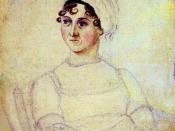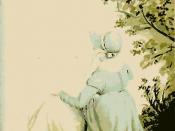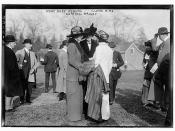In "Mansfield Park", Jane Austen explores the virtuous/vixen dichotomy through a variety of female characters, mainly Fanny Price, the protagonist, and Mary Crawford, the antagonist in the love triangle between Fanny, Edmund and Mary.
"Mansfield Park" subverts the Cinderella story, in that Fanny, a poor young woman who is sent to live in a house where she is mistreated and ignored, has a companion in Edmund Bertram, who, unlike the Prince in Cinderella, falls in love with someone else, Mary Crawford. Cinderella has an uncommon stroke of good luck when she meets the Prince, and they marry and live happily after. Fanny loves Edmund, but not until a long time has passed, many mistakes have been made and many people have been hurt, does Edmund love Fanny back and they marry.
Because Jane Austen uses Mary Crawford's character to disrupt Edmund and Fanny's blooming relationship, the audience is positioned to see Mary Crawford as "vixenish", and Fanny, gentle and shy as the victim, is seen as the "virtuous" one.
In this novel, vixenish one, Mary, is both beautiful and charming; with a charisma that draws everyone's attentions to her. She is accomplished, brave, and has a love for excitement that makes her popular with everyone she knows. But she lacks one thing: principles.
Mary Crawford thinks only of herself and is rather dismissive of other's feelings - for example, when Fanny is tired from the walk in the park at Sotherton, Mary not only ignores Fanny's feelings of neglect, but convinces Edmund to continue walking with her, leaving Fanny sitting alone by herself. Although our sympathies are obviously meant to be with Fanny and we are meant to distrust Mary, Mary is ahead in the quest for Edmund's affections. Fanny's passiveness and Mary's assertiveness increase our...



The crawford
I never spent this much time with this crawford in what I suppose is the female heavy triangle.
After thought: I've never really researched how much time Austen spent picking names, but I suppose the name "Mary" could repersent Magdalene.
0 out of 0 people found this comment useful.